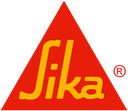Sika CarboDur S812, Laminates for Strengthening Concrete Timber Masonry Steel and Composites, Interior & Exterior, Black, 80 mm x 250 m

SIKA
Sika is a global leader in specialty chemicals for the construction and industrial sectors. The company develops and supplies innovative products and systems for bonding, sealing, damping, reinforcing, and protecting structures. With a strong focus on sustainability and performance, Sika serves a wide range of applications including concrete production, waterproofing, roofing, flooring, and structural strengthening.
Read more| Sika CarboDur plates are pultruded carbon fibre reinforced polymer (CFRP) laminates, designed for strengthening concrete, timber, masonry, steel and fibre reinforced polymer structures.
| ||||||||||||
UsageSika CarboDur systems are used to improve, increase or repair the performance and resistance of structures for:Increased Load Carrying Capacity:
Advantages
PackagingCut to size in non-returnable cardboard packaging. ColourCarbon fibre reinforced polymer with an epoxy matrix, black. | ||||||||||||
Technical Information Laminate Tensile Strength Mean value 3 100 N/mm2 5 % fractile-value 2 900 N/mm2 Values in the longitudinal direction of the fibres. Laminate Tensile Modulus of Elasticity Mean value 170 000 N/mm2 5 % fractile-value 165 000 N/mm2 Values in the longitudinal direction of the fibres. Laminate Elongation at Break Strain mean value 1.80 % Values in the longitudinal direction of the fibres. Glass transition temperature >100 °C (EN 61006) |
